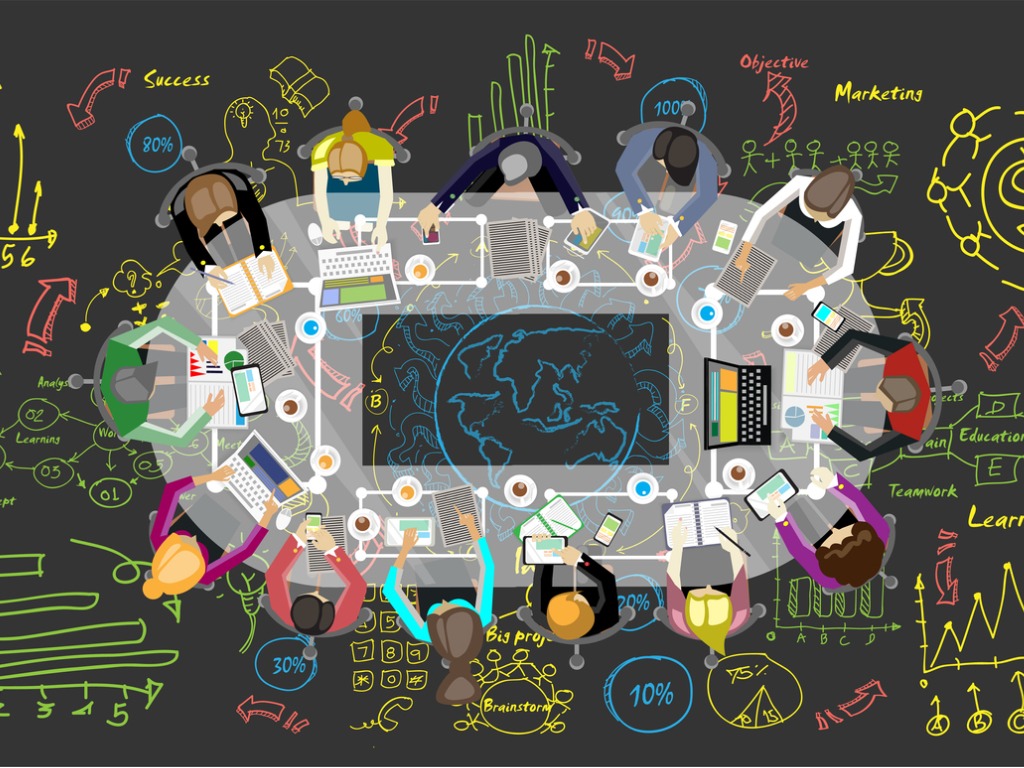
Our human ‘soft skills’ must evolve at the same rate as our digital tools, says Kemetia Foley
My last 10 years in the workplace have allowed me to witness increasingly common issues with communication skills, perhaps accelerated by mobile device use and combined with the evolutionary progress of generations. Society may debate the state of socialization and upbringing of youth – it serves as an easy option for placing blame. Yet this is not my experience. I observe these challenges across all generations, revealed in unspoken expectations, presumptions, and finger-pointing circumstances. The ability to clearly communicate in verbal and written form, listen, ask questions, and solve problems appears to be declining in the workforce. [*caveat, I can only address the U.S. workforce because that is my only experience]
What if we wanted to address this issue, putting the focus on people entering the workforce for the first time? Which entity is responsible for teaching employees advanced communication skills, often labelled as ‘soft skills’?
Soft Skills
There are programs at the U.S. high school level that offer career and technical courses [www.acteonline.org]. In contrast, post-high school education can offer two-year career programs that grant certificates and associate degrees, and then there is the traditional university offering a four-year bachelor’s degree. Is it reasonable to assume that basic soft skills are reinforced during a person’s education before they enter the workforce as a new employee? The soft skills needed to communicate, participate, and engage in the workplace are not always directly highlighted as curriculum or courses post-high school education; they are not parsed out.
The economic challenges from low levels of employment, employee turnover, and lack of a competitive skillset have led many states to create programs within their employment bureau to aid job seekers in bridging the gap.
Soft-skills certificate courses such as WorkReadyNH present a curriculum focused on these core learning modules.
- Interviewing Techniques & Resume Styles
- Active Listening & Communication Strategies
- Team Building
- Critical Thinking
- Problem Solving & Decision Making
- Conflict Resolution
- Business Ethics & Employer Expectations
- Workplace Sensitivity
- Customer Service
- Safety in the Workplace
Job seekers new to the workforce may need help to adapt to some or all of these skills. Some previously employed individuals are re-entering the workforce after a chunk of time away, which makes it even harder for them to acclimate to today’s workplace culture. What previously worked has changed. While companies generally provide some onboarding for new hires, there is a gap in the teaching or evaluation of candidates in which essential ‘soft skills’ necessary for social learning are not necessarily revealed during the hiring process.
Example
An employer may not reveal that the skill of reading and writing in cursive is required, nor would the candidate even consider the skill necessary [see above bullet: Business Ethics & Employer Expectations]. This skill traverses work generations, and the importance of this skill has declined in the last decade. Yet it would directly affect the clarity and speed of communications. Why is this important, and where is the gap?
In 2010, the Common Core State Standards removed cursive writing as a compulsory subject in the American education system, believing that computer literacy would render it obsolete. This decision, however, overlooked the fact that the Baby Boomer and Generation X population still hold a considerable percentage of leadership and management positions in the country’s workforce. Additionally, the average age of American consumers is nearing 40, suggesting that many still consider cursive writing a valuable skill. Hiring managers may assume candidates possess this ability during job interviews unless expressly stated otherwise.
Over the past four years, I have observed and trained newly hired employees and students who struggle with the following workplace skills.
Verbal Communication by Telephone
During my recent classes, I noticed that many students were highly skilled with mobile devices. They could text quickly, navigate many apps, and search for how-to videos on YouTube in a flash. However, these same students struggled when it came to speaking to someone else over the phone. This applied to both mobile and landline phones. Then there is the issue of listening, which is addressed later.
To address this issue, a section of the course focused on teaching these students valuable phone communication skills, such as:
- Properly answering a phone call
- Informing the customer about the lack of information to fully address the inquiry, and the need to provide a return call to the customer once the information is obtained
- Avoiding interrupting customers or colleagues and allowing them to finish speaking
- Summarizing the conversation for the customer and ending the call politely
There is a chance to teach staff about the best way to communicate. Numerous websites offer various options for customers. When working in a team or interacting with a customer, employees can inquire about their preferred mode of communication. They can ask if they would like to be contacted through email, text, or voicemail. It is important to remind new staff that some individuals still prefer to receive voicemail messages.
Critical Thinking and Listening
New-to-the-workforce employees have fallen into two categories in my experience. Either they ask so many questions that it can test one’s patience, or the employee stubbornly or pridefully refuses to ask questions, and in doing so can seriously affect a project or a customer relationship; it is imperative that someone (hopefully the hiring manager or immediate supervisor) address this potential issue during the interview process.
There is not only the employee’s conundrum of not knowing what they don’t know, but also that of not knowing which questions to ask – questions that will clarify and help prioritize work issues, such as:
- When do you need this completed?
- Do I need to review this with someone prior to completion?
- As I’m new to the company, can I schedule time with you early on to make sure I’m on the right track with this project?
- Are there more resources for me to find company or team information I may need for this role?
It’s common for employees to rush and end phone calls with customers, leading to incomplete information and a lack of probing questions. Without proper guidance, employees may default to sending a brief text response instead of a thorough email with all the necessary details. They may also miss the intonation and mood of the caller when rushing the conversation to a conclusion.
When coaching new employees, it’s important to emphasize that asking for assistance is expected and encouraged. Some employees may struggle with self-reliance due to a fear of looking foolish or an internal voice that criticizes them for not already knowing everything. Let them know that it’s okay to ask questions and seek help.
Initiating a conversation with the new employee about the topic of important vs. urgent matters would be helpful here. They will not necessarily know that the person they are speaking with has spent millions of dollars with the company and is a former board of directors member. Do they need to know that? In an ideal world, no. In the real world, yes. What we do want to see is consistent, high-level professionalism from this employee. Let’s help these newcomers build that muscle by sharing priorities and context.
Conflict Resolution
As a young adult, I was able to manage simpler conflicts easily, though not always with the most mature approach. However, it becomes complicated when handling more complex issues such as personality clashes, inappropriate comments, yelling from a supervisor, and being sabotaged by a colleague.
During a recent course, I assigned students (note the student age span was 22–37 years of age) various role-play scenarios that could potentially result in conflict. I divided them into teams and provided no instructions on how to approach these scenarios, so they initially relied on their typical responses.
A sample scenario involved a supervisor correcting the staff member in front of the customer. The staff member was embarrassed and feeling quite resentful. The other staff witnessed this event but chose to avoid getting involved.
The response: The students were in complete agreement that the embarrassed employee should have provided the supervisor with a visual response of a well-known obscene gesture and walked out the door.
The same students were then supplied feedback and suggestions on alternative approaches for resolution.
The critical thinking piece was also included – was this a common behavior by the supervisor? Had management previously addressed a similar issue with this manager? Was there a way for the employee to address the manager professionally, away from the customer’s view? When provided with critical thinking skills and allowed to create a different path to work through the scenario, the students gained confidence in their ability to address conflict.
The examples given in this article are just a small part of the broader world of workplace communication strategies and social learning. Imagine if you could learn these skills before starting your career rather than through trial and error over many years. While experience is invaluable, training in soft skills is like a shortcut for entering the workforce, helping both employees and employers.
Digital tools will exponentially affect all forms of communications globally, but I don’t believe the need for human soft skills will ever completely disappear; they will have to evolve at a similar or faster rate.










